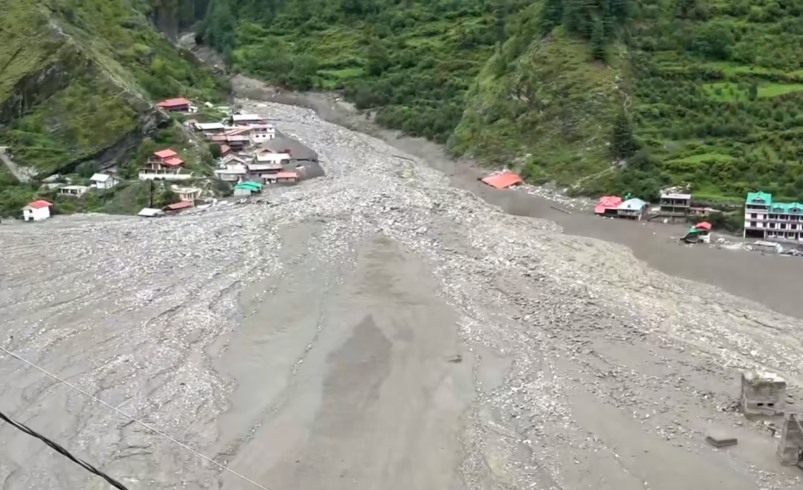Expert Suggests Glacial Lake Burst, Not Cloudburst, Behind Uttarakhand Disaster
- August 6, 2025
- 0

The recent tragedy in Uttarakhand’s Uttarkashi district, which devastated Dharali village and left scores missing, may have been caused by a glacial lake burst rather than a cloudburst. Experts have pointed out that the area did not experience significant rainfall prior to the disaster. Instead, they suggest that a glacial pond burst could have triggered the deluge that resulted in five confirmed deaths and numerous missing persons, including 11 soldiers.
Dr. DD Chauniyal, a geography professor at Doon University, has highlighted the presence of several glacial ponds in the snow-covered regions north of Dharali village. These ponds, filled due to heavy rain and melting snow, may have burst, causing a chain reaction that led to the catastrophic flow of water and debris downstream. The steep gradient of the Kheer Ganga river exacerbated the situation as it flowed towards Dharali.
The Kheer Ganga river’s course has changed over time, now flowing upstream where settlements have been established. Dr. Chauniyal noted that this shift led to the destruction of buildings constructed along its previous path. The old Dharali village, built on safer grounds, remained intact while newer constructions were obliterated.
The tragedy underscores the dangers of unplanned development in ecologically sensitive areas like the Himalayas. The rapid construction of hotels and roads without considering natural disaster risks has proven disastrous. Experts emphasize the need for careful planning to prevent future calamities.
Rescue operations are ongoing as teams from the Army, paramilitary forces, and disaster response units work tirelessly to locate missing individuals. Continuous landslides have hampered access to Dharali, complicating rescue efforts.
The incident has reignited debates on balancing development with environmental preservation. Political leaders advocate for comprehensive strategies to prevent such disasters in the future. They stress the importance of protecting ecologically sensitive regions from unplanned construction and emphasize long-term preventive measures.